For years, NASA has been developing the Artemis program, which aims to return humans to the Moon and build a base there. However, billionaire Elon Musk has been attacking these plans for two months now, suggesting that we go to the moon instead. This story intertwines scientific research, complex technical projects, issues of government efficiency, commercial interest, and international rivalry. However, we will try to understand everything step by step.
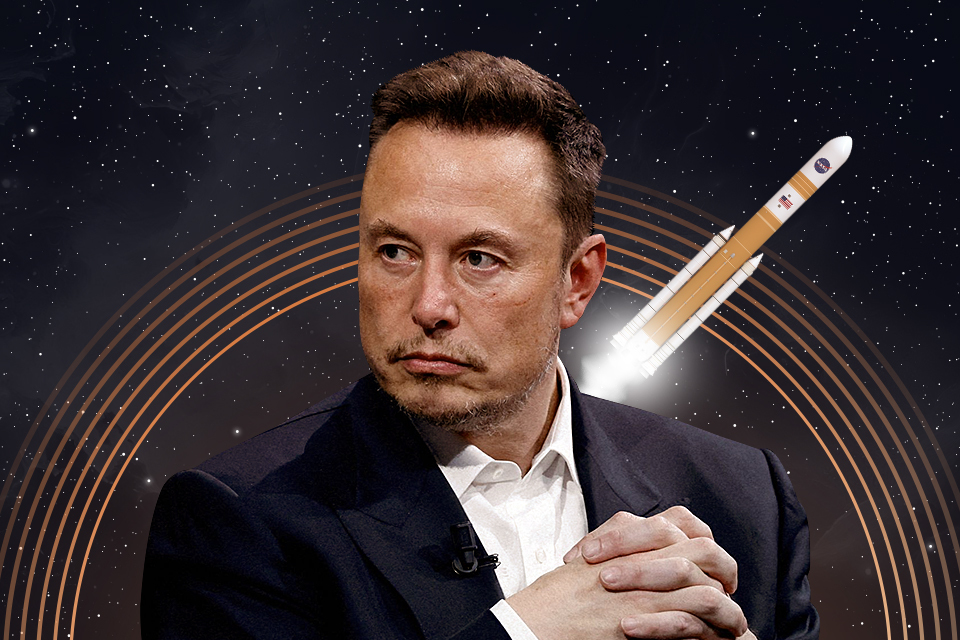
Return to the Moon
At the end of December 2024, American billionaire Elon Musk sharply criticized NASA’s plans and progress on the Artemis project on his page on the X network. In doing so, he started a real storm of discussion around the most ambitious project of our time. Passions around it are still raging, so to understand all this, it’s worth returning to the story’s beginning.
The last time a human foot stepped on the surface of the Moon was in December 1972. After that, however, the Apollo program was curtailed due to its incredibly high cost. Nevertheless, it remained the main space pride of the United States for many years. So, from time to time, questions arose about when NASA would go there again.
In 2004, the Constellation program was announced. As in the case of Apollo, the largest American manufacturers were brought together to implement it. This time, they decided to build not one huge rocket, but one large rocket, one smaller rocket, and, of course, the spacecraft itself and the lunar module.
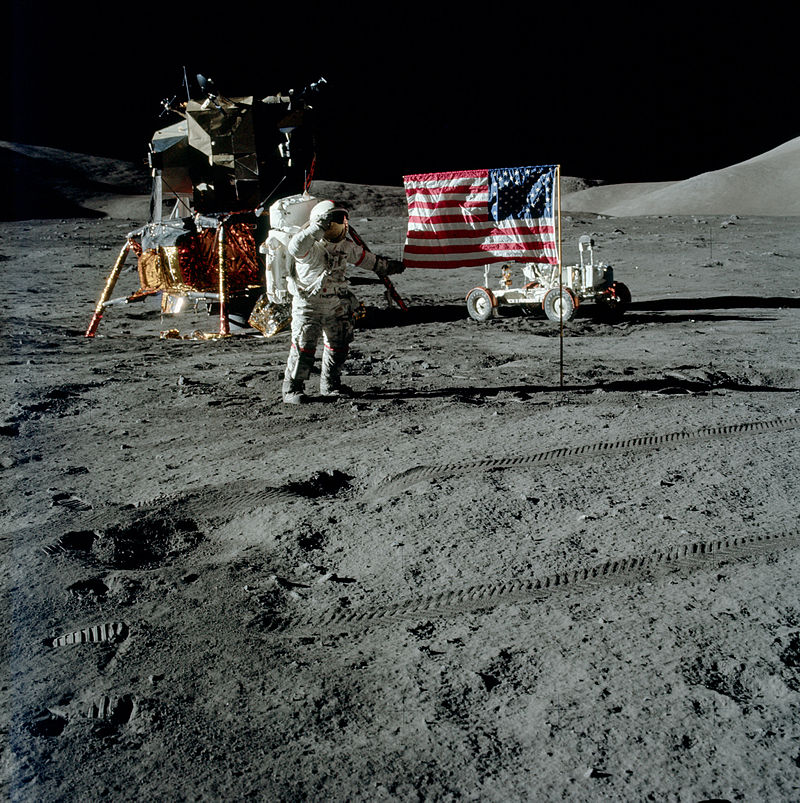
According to the plan, the larger rocket, called Ares V, was to launch only the engine and fuel into Earth’s orbit to accelerate the ship toward the Moon and break it near it. The spacecraft itself, called Orion, along with the lunar module, crew, and fuel for returning to Earth, was to be launched by a smaller rocket called Ares I. In orbit, the two parts would dock, and then everything would proceed as it did during the Apollo flights.
At that time, U.S. scientists and politicians already understood that, in addition to prestige, a return to the Moon could give a significant boost to energy in the form of helium-3 for nuclear reactors, industry in the form of rare earth materials, and science through the ability to build telescopes on the back of our satellite, where they would not be interfered with by light pollution and radio waves from the Earth.
A project with two rockets instead of one giant Saturn V seemed much simpler than Apollo. All that had to be done was to repeat over the next decade what had already been done 30 years before. All of this was much more realistic than the plans of the then-young billionaire Elon Musk to create a private rocket to put satellites into orbit.
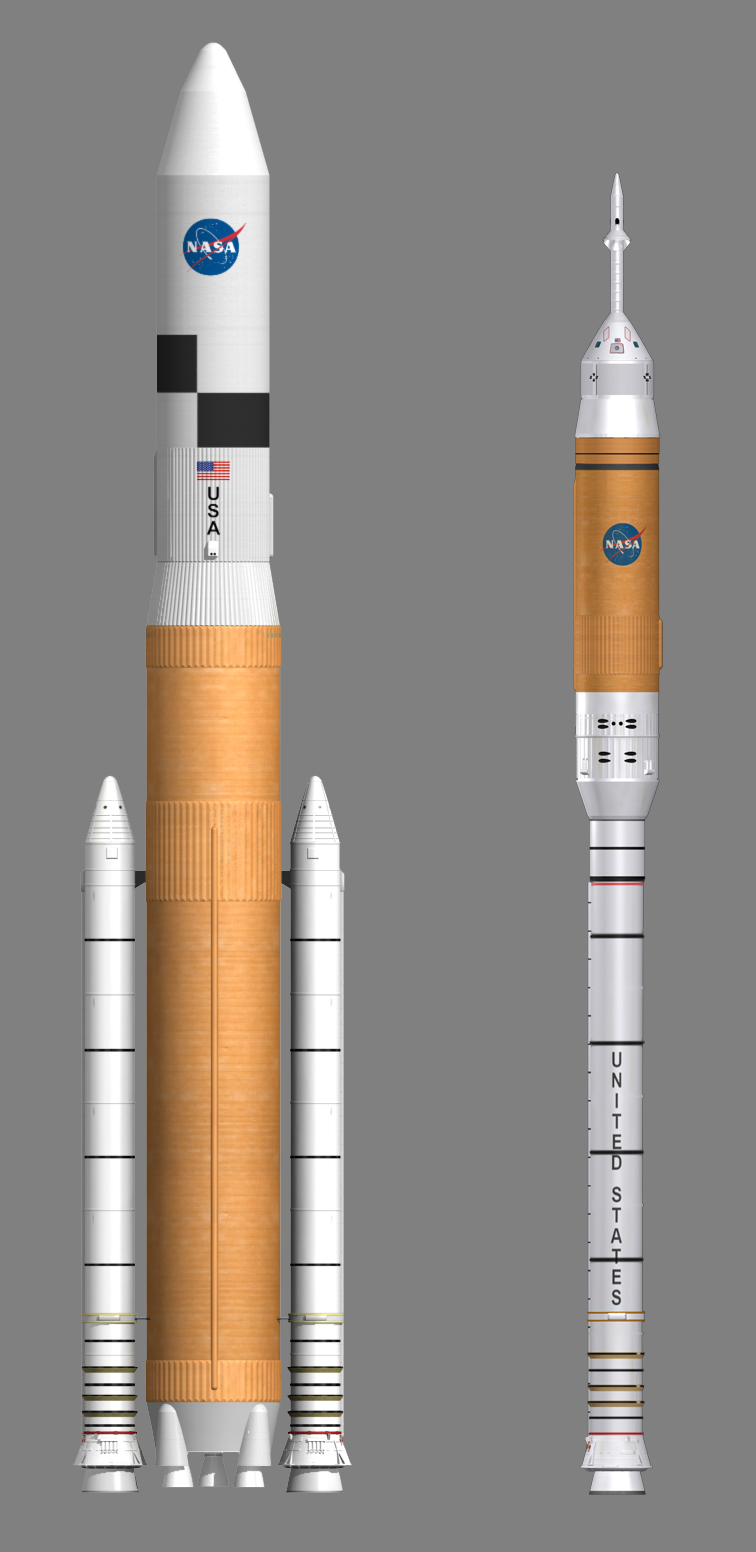
Artemis program
Six years passed, and the year 2010 came. During this time, Elon Musk had already managed to launch his first rocket into space, although many people continued to doubt him. However serious questions arose about the Constellation project. Because of everything that was planned to be built, at least something was done only on the Orion module. The rest of the project did not go beyond pictures. It became clear that these plans would not be realized over the next decade.
So Constellation was officially canceled, but work on the Orion spacecraft continued, rightly believing that if not for a flight to the moon, then for sending crews to the ISS it would work. At the same time, they concluded that a super-heavy rocket was still needed, and began developing what was later called the Space Launch System or SLS. The main developer was the Boeing Corporation, which had previously developed the Apollo spacecraft.
It was expected that its first unmanned launch would take place in 2017, and then we could think about flights to the Moon. Moreover, a new space race was brewing: China was proving in practice that its space ambitions were not an empty sound, and the Communists were not averse to being the first to develop helium-3.
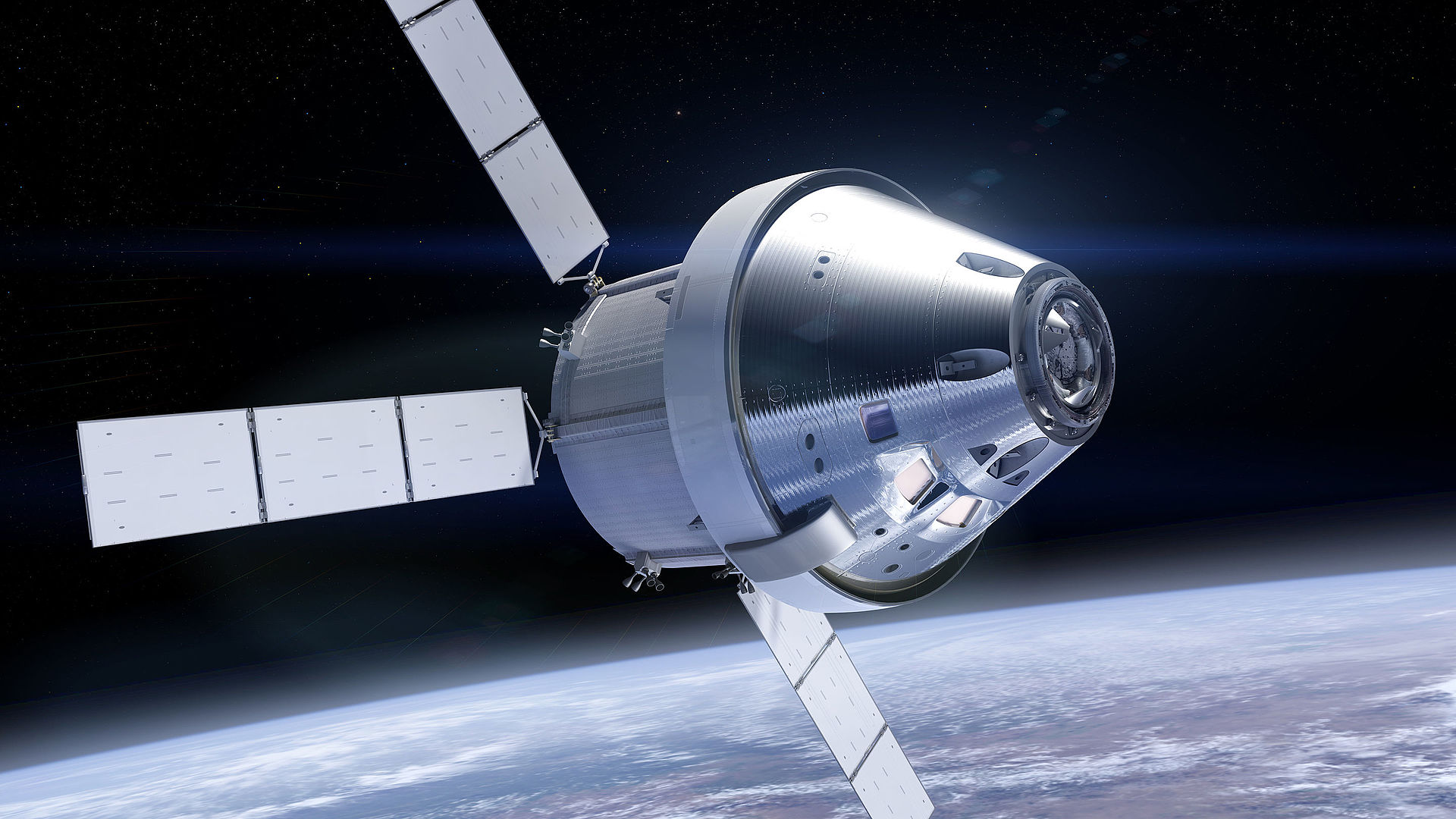
The year 2017 has come. Elon Musk’s SpaceX has become a company that regularly makes commercial launches and has its super-heavy rocket project, Starship. And NASA still didn’t have a rocket to fly to the Moon. Donald Trump, who was in his first term as president, decided to intensify the work by collecting all the developments on the rocket and the ship and launched the Artemis program, named after the Greek Moon goddess. Other countries joined the development. In particular, the European Space Agency has already been developing a service module for the spacecraft, and Japan’s JAXA has been developing a habitation module for a future station in orbit of our satellite.
Much of the work had already been done, so everyone expected the first unmanned launch to take place in the very early 2020s, followed by a manned flyby of our satellite and the long-awaited return of American astronauts to the lunar surface in 2024.
All of this was to happen with the participation of Elon Musk because SpaceX took over the development of the lander based on the upper stage of the same reusable super-heavy carrier Starship. True, even its basic version was not ready for launch at that time, but against the background of other tasks that had to be accomplished, this was not a problem.
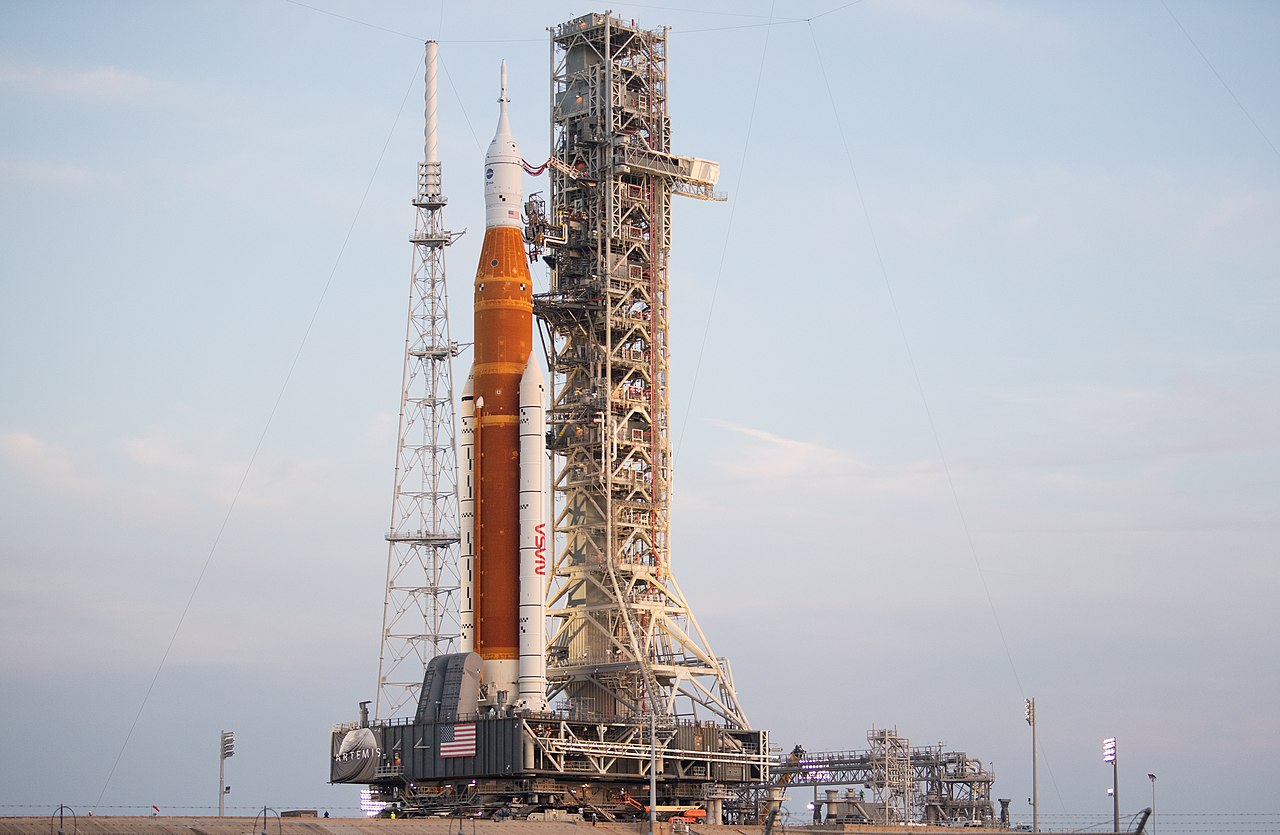
However, something went wrong again, and the already assembled rocket for the Artemis-1 mission had to be rolled out to the launch pad for several months and then brought back to the assembly shop. And its height is 98 meters.
Finally, in November 2022, Artemis-1 was launched. The main unmanned mission was successful. Orion circled the Moon and returned to Earth. However, numerous devices that were supposed to go into space as additional payloads encountered problems, some of which were related to the incredibly long preparation for the launch, which failed some probes’ electrical networks.
All of this made experts and the wider space community persistently ask NASA and Boeing if there was any way to prepare for the launch sooner. However, it soon became known that even the Artemis-2 mission, which was supposed to be a manned flyby rather than a landing, would not be able to be realized until 2025.
However, NASA did announce a crew for it, and for the third mission, which already included a landing, it chose several areas at the south pole of the Moon. However, the question of why 20 years have passed since the start of the Constellation program, and not a single American astronaut has ever set foot on the surface of our satellite, has arisen more and more often. Why is it impossible to repeat the success of the 60s of the last century?
During 2023-2024, information was gradually leaked to the press that the assembly of the SLS had turned into a production hell. The rocket components were manufactured by dozens of companies, and then NASA and Boeing specialists assembled them like a puzzle.
It turned out that some of the schemes that worked during the preparation of the first copy could not be repeated, and in fact, some of the processes had to be reinvented. And it was not the ESA, from which one might expect bureaucracy and slow work. The problem was somewhere in NASA and its American contractors.
Elon Musk and his Martian project
Meanwhile, Elon Musk managed to become not only a major space businessman but also a political figure. He financed the election campaign of Donald Trump, who was eventually elected president of the United States, and with his support began to speak out about what was wrong with the American government. In his, and not only his, opinion, there was too much bureaucracy and not enough efficiency.

Trump liked these reflections so much that he decided to appoint Musk as the head of a new body called the Department of Government Effectiveness, or DOGE, which aims to identify inefficient processes in government agencies and eliminate them.
Over the past two years, Musk has been able to make several unmanned Starship launches. And although some of them were failures, in general, we can say that his performance is slightly better than NASA’s. Therefore, his criticism cannot be ignored.
Back in 2020, Musk announced that thanks to Starship, a million people would live on Mars in 2050. However, for all the hype that this statement made at the time, experts assessed it as unrealistic. And over time, the billionaire began to talk less and less about this promise.

In December, Musk made a statement that the Artemis program is a waste of money and that the Moon is not interesting at all. It is better to invest in a flight to Mars instead. At the same time, his plans are extremely bold.
According to them, the launch of an unmanned Starship to Mars can be expected during the next launch window in 2026. And in 2028, astronauts should go there. This is extremely bold, given that this spacecraft has never flown beyond Earth’s orbit and no human has ever traveled on board.
Even refueling the Starship in orbit, which is declared one of the most important stages before a flight to Mars, has not yet been realized. And the journey to the Red Planet itself is not about “repeating what has already been done,” as in the case of the Moon.

It takes 3 days to reach our satellite and 8 months to reach Mars. So far, only relatively small automatic vehicles weighing up to several tons have made this journey. This will require much more effort.
As for the reasons for doing so, everything is much more complicated. On the one hand, there is no helium-3 or rare earth materials on Mars. Geological exploration of the planet is at an early stage. Perhaps something valuable will be found there, but this is a matter of the future.
On the other hand, Mars itself is a huge value. It once had a full-fledged atmosphere and hydrosphere, and water is still present. The Red Planet is the best candidate for terraforming, i.e. turning into a second Earth. And the country that will be the first to land on it has every chance of maximizing the benefits of this project in the future.

Unpleasant questions for Musk
Immediately after Musk’s announcement, several questions arose to him. The first group concerns his conflict of interest. After all, the chairman of the commission that checks how ineffective current NASA projects are is also the person whose company is to receive billions of dollars in contracts if existing programs are closed and new ones are launched.
So, no one can guarantee that the DOGE chairman’s conclusions about the current state of affairs in the Artemis program are objective, even though everyone knows there are problems with it. According to the current conflict of interest policy, this should never have happened, but Musk claims that this policy is what leads to inefficiency, and Trump supported him in this.
After all, despite its name, the Department of Government Efficiency is not part of the government. It is a temporary structure created based on a non-governmental organization that used to advise US government agencies on the use of information technology.

Source: www.nytimes.com
Even about Elon Musk, there is contradictory information as to whether he is the same “special civil servant” who can be a businessman at the same time, or whether he is officially nobody at all. Moreover, no one can say whether the people he recruited to his team, who are now trying to gain access to confidential information, have been subjected to any kind of vetting for ties to Russia or China.
There are also purely technical questions about Musk’s Martian project. After all, even if we imagine that he will be able to meet those fantastic deadlines, success with Starship alone is not enough. Sending the ship on the right trajectory, slowing it down near Mars, and doing the same for the return trip is not a guarantee of mission success.
There are dozens of minor technical issues, from the organization of data transmission to crew health problems, that have not yet been resolved. NASA planned to work on them during lunar missions.
Finally, the main question remains how did the module with people land on the surface of Mars and then take off from it? Until now, the descent into the extremely thin atmosphere of the Red Planet on a parachute system has been realized only for artificial objects weighing up to two tons, none of which had a person on board, and each time it was an extremely difficult and stressful operation.

As for launching from the surface of the Red Planet, no vehicle has ever done so. And the idea of where to get fuel on Mars is also more theoretical than practical. How Musk proposes to implement all this is unknown.
Current situation
In general, the situation after Musk’s publication remained uncertain. In early January, NASA officially published a response to the eccentric billionaire, explaining what was wrong with his alternative.
DOGE employees tried to get access to NASA’s financial statements and internal documents, but they are in no hurry to give up, let alone cooperate, citing current rules.
Some of the space agency’s employees have received offers to resign. It is laying off its employees associated with Artemis and Boeing, which is the main developer of the SLS. The company is in big trouble after the failure of the Starliner test, and they do not want to be accused of having forgotten how to create space technology.
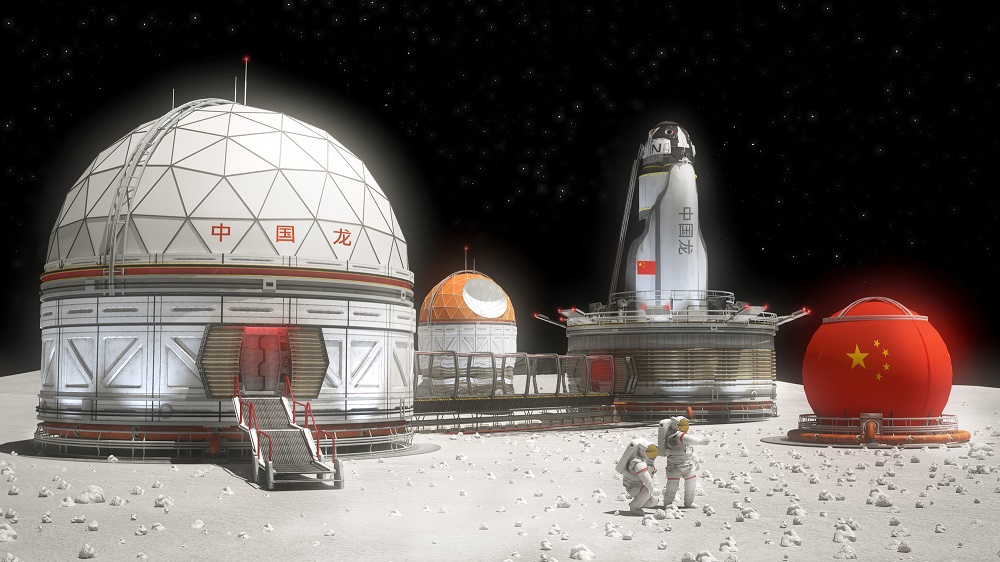
However, no one has officially canceled Artemis. Engineers at Cape Canaveral continue to slowly prepare for the launch. Delegations from Japan, which is a partner in the creation of the lunar orbital station, have officially stated that the project is continuing. And then NASA came up with a compromise proposal to continue exploring the Moon, but with the main goal of going to Mars. So far, Musk has not responded.
In all this, it was somehow forgotten that the “dead project” Artemis contains a part for which the billionaire’s company is responsible. We are talking about the lander, the contract for which was brought by SpaceX, but which is also not ready. So the situation is as confusing as possible.
As for the main question: Mars or the Moon, the prospects for this or that choice are determined by the presence of a third party in this confrontation, China. China will go to the Moon because for now, their main task is simply to keep up with the United States. But if NASA and Musk do not send astronauts to either the Moon or Mars by the end of this decade, the Chinese would not mind being the first.
Musk’s plans for Mars seem frankly fantastic. By sacrificing Artemis for them, the United States risks not going anywhere at all and falling critically behind China in space. But if it turns out that the SLS really cannot be produced regularly, the United States will still lose to China. On the other hand, if a flight to Mars can be organized, it will preserve the US leadership regardless of what China achieves on Mars. Finally, it is possible not to choose at all, but to continue implementing both projects without giving preference to either one.


